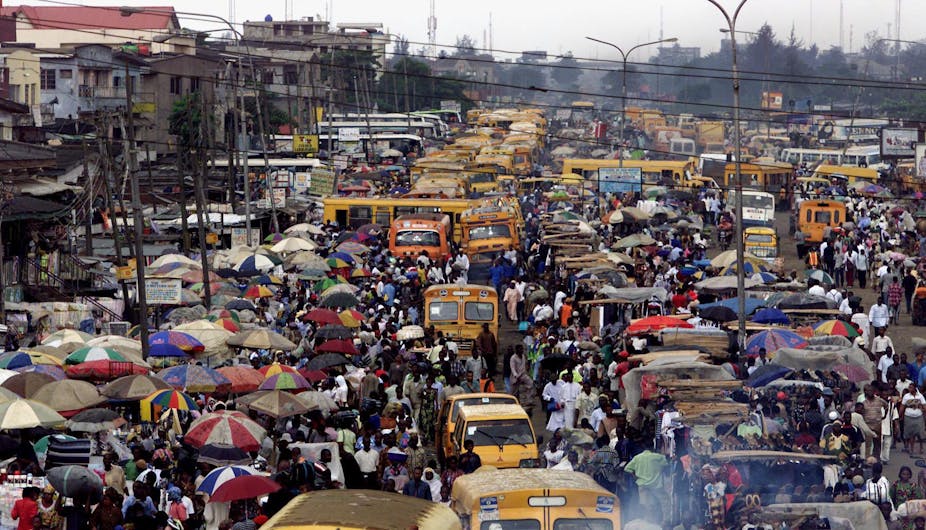The World Bank’s latest annual report on poverty and shared prosperity has an unsurprisingly positive message that only 10% of the world’s population lived in extreme poverty in 2015, which is the most recent year that available data allows for global poverty estimates to be made.
As World Bank President Jim Yong Kim points out in the foreword to the report, this is “the lowest poverty rate in recorded history”.
This is a story that we have become accustomed to hearing from the Bank, and other significant participants in the debate about poverty and development in the global South (Asia, Africa, and Latin America). But does the story actually hold true? For example, the World Bank measures extreme poverty in terms of the number of people who live on less than USD$1.90 a day. But is this in fact a meaningful measurement of poverty?
World Bank poverty estimates have come in for a lot of criticism. For example, Jason Hickel, an anthropologist at the London School of Economics, has pointed out that there’s often a large gap between national poverty lines and the international poverty line stipulated by the bank.
For example, more than 55% of South Africa’s population lives below the country’s upper poverty line, of R1,138 (USD$80) a month. But, according to the World Bank, only 18.85% of the South African population lives in poverty. This suggests that the international poverty lined touted by the World Bank systematically underestimates the extent of global poverty.
This point is partially acknowledged in this year’s report. Accordingly, the World Bank proposes new and higher poverty lines - USD$3.20 and USD$5.50 a day, respectively. According to the report, almost half the world’s population lives below the USD $5.50 a day poverty line. However, we need to go further than this – indeed, the World Bank’s widely touted story of historically low poverty levels must be rejected.
If we are to have a serious debate about world poverty on End Poverty Day, we have to start by acknowledging that the global problem of poverty is far more extensive than World Bank rhetoric would have us believe. Two big factors need to be confronted. The first is that the majority of the world’s poor live in countries that have experienced strong economic growth. The second is that the growth strategies these countries have practised create and reproduce poverty.
Unequal distribution
The World Bank attributes the supposed historical decline in poverty in large part to the rising wealth of several Asian countries. But, this is a problematic argument. In his recent book Global Poverty, development economist Andy Sumner shows how a new geography of poverty has emerged in the global South.
Whether we use monetary estimates – Sumner uses a poverty line of $2.50 a day – or estimates of multidimensional poverty; that is, poverty measured according to health indicators, education levels, and economic standards of living – as many as 70% of the world’s poor currently live in what the World Bank refers to as middle-income countries.
As Sumner points out, poverty in middle-income countries cannot be attributed to an absolute lack of resources. These are countries that have experienced strong economic growth since the 1990s. What it boils down to in middle-income countries like India,Nigeria, and Brazil is the issue of distribution.
The economic growth that has lifted countries from low-income status to middle-income status is profoundly unequally distributed. As a result, large parts of the populations in these countries are excluded from the benefits that accrue from this growth.
This in turn has implications for how we think about growth strategies and poverty reduction in the global South.
Global growth and development
Much of the economic growth that has lifted countries from low-income status to middle-income status has resulted from the emergence of global production networks and global value chains since the late 1970s. Poorer countries have been integrated into these networks in large part due to their large reservoirs of cheap labour. It is this process of industrialisation that has turned low-income countries into middle-income countries.
But if global production networks come with so many developmental benefits, why is it that world poverty is concentrated in countries that have experienced economic growth precisely because they are integrated in these networks? To understand this paradox, it is important to remember that global production networks are comprised of different value tiers, and that different countries and different groups capture different amounts of the value that is created in these networks.
This obviously leads to a reproduction of inequality – countries in the global South tend to be integrated in lower value tiers.
This is evident in the fact that the distribution of national incomes and wealth at a world scale is still characterised by a pronounced North-South hierarchy. But it is more important still to be aware that countries in the global South that have witnessed strong economic growth have also experienced marked escalations in national levels of inequality. In India in 2016, for example, the richest 10% of the population received 55% of all income. This is an increase of more than 20% since 1980.
This pattern of development clearly shows how poverty is a matter of distribution that is related to the kind of employment opportunities that are created when southern countries are embedded in global value chains. The factory jobs that are established when transnational corporations set up shop in countries like Mexico or Vietnam are fundamentally precarious. And it is precarious workers who capture the least of the value that is created in global production networks. This is why precarious workers live in poverty in middle-income countries in the global South.
What’s clear from this is that we have to ask ourselves what a development policy based on redistribution in favour of the working classes in the global South might look like – because that, ultimately, is the key to ending poverty in an unequal world.

